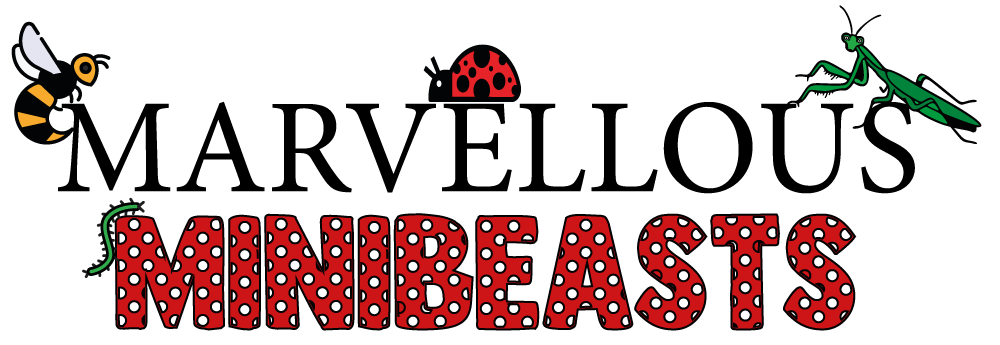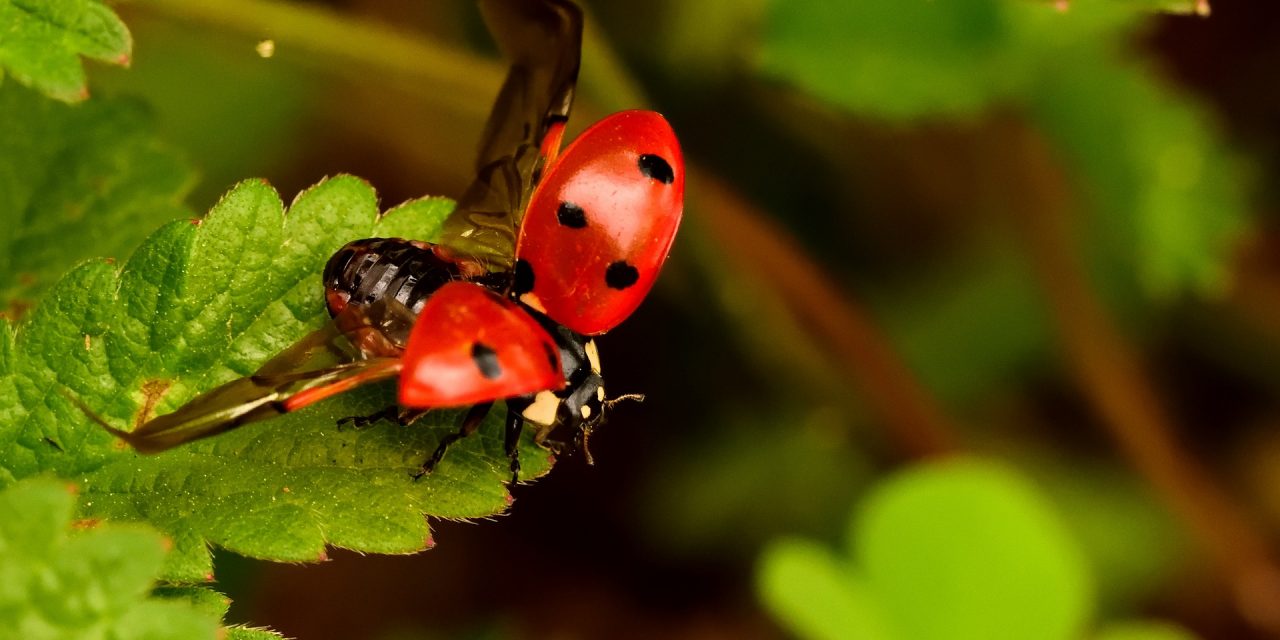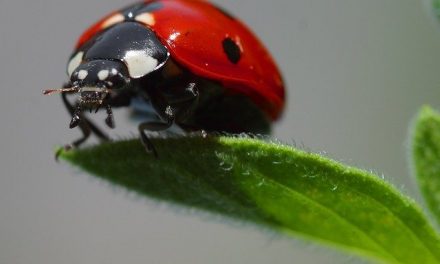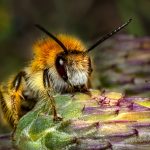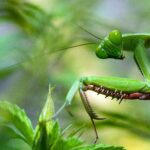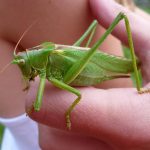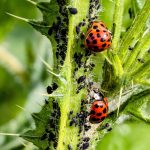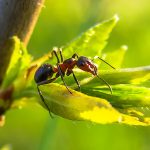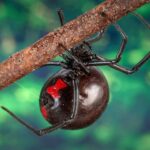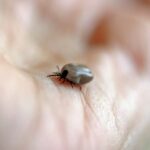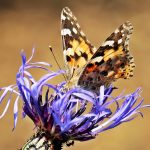Ladybugs, also called ladybirds in the UK, belong to the Coccinellidae family, and they are a small type of beetle. They are considered a helpful insect to gardeners and farmers because they feed on the pests that destroy crops, plants and flowers like aphids or scale insects. Ladybugs also lay their eggs directly into aphid and scale nests to give their larvae an immediate food source, which is actually quite clever as it ensures the survival of their babies.
Ladybugs cannot sting; however, they can bite or pinch. It is unusual for a ladybug to bite, but that’s not to say they won’t. Their bite also doesn’t contain any kind of venom, so a bite from them is relatively harmless, but it can still draw blood. As with all insects, there is a risk of an allergic reaction if bitten, so if you have allergies to insects, you shouldn’t handle them.
A study carried out In 2004 by an entomologist showed that out of 641 ladybirds, 26% of them bit him. He placed the 641 beetles into 11 different plastic containers, washed and dried his hands, and put his hand into each of the containers. The study found once a ladybug broke the skin; other beetles would come and feed on the area. He also found that female ladybugs were more likely to bite than male ladybugs. The test subject wasn’t threatening to the ladybugs, but they did still bite him.
Fun fact
The name ladybird first originated in Britain, where these insects became known as our Lady’s bird or the Lady beetle. Mary (Our Lady) was often depicted wearing a red cloak. The spots on the most common ladybird in Europe, a seven-spot ladybird, were said to symbolise Mary’s seven joys and seven sorrows. The name was changed from ladybird to ladybug in the US.
Do all ladybugs bite?
All ladybugs have mandibles or legs, which they can use to bite or pinch you, so yes, in theory, they can all bite or pinch.
Defence mechanism
Like most insects, ladybugs use defence mechanisms to avoid being eaten by predators.
- Ladybugs have a tough outer shell, which protects their wings and soft inner body. While this won’t be enough to deter large predators, smaller predators will have a tough time getting past the shell.
- Predators have learned to avoid particular colouration on insects as it usually means they taste bad or are poisonous. The unique bright colouring indicates that ladybugs should not be eaten. A ladybug’s colouring mimics other poisonous insects; apart from tasting bad, ladybugs are harmless if eaten.
- When provoked or attacked, the Ladybug releases a chemical compound from special glands on its feet, telling predators to stay well clear of it. If they get past this defence mechanism, they quickly learn that they probably shouldn’t have eaten it as this chemical makes them taste really bad. Still, this sacrifice will save many more ladybugs as the predator will want to avoid eating them in the future.
- Ladybugs can also play dead. They do this by lying still and drawing in their limbs to mimic death. Most predators who feast on bugs and insects like to eat them while they are alive; dead bugs can be spoiled or contaminated, so they will avoid eating them.
- The Ladybug can bite; however, they mainly prey on soft-bodied insects like aphids. Their mandibles are not strong enough to harm larger predators, so their bite is usually the last line of defence in terms of defending themselves.
Defence mechanisms in other insects
Hair, spines and bristles
Hair, spines and bristles can be an effective defence mechanism against predators and even parasites.
- A mouthful of spines can be an unpleasant experience for any predator; if the spines contain poison, it can even be fatal.
- Parasitic flies or wasps may have difficulty laying their eggs if they can’t get through the thick hair on an insect’s body.
- Some caterpillars weave their hairs into their silk when building a cocoon which can be an additional defence against predators.
Limb loss
Some insects can break off a limb if a predator catches it. They have a fracture line that allows it to break off quickly; this is called autotomy, and it is most common in insects like;
- Crane flies
- Sticks insects
- Leaf insects
- Grasshoppers
- Scorpions
It might seem horrible, but in most cases, sacrificing a limb can save its life. Young insects which can do this can regenerate the missing limb as they moult.
Chemical Defenses
Many insects are equipped with an arsenal of defence mechanisms and can easily take on a predator walking away unharmed. Some insects carry chemical defences that can cause injury and kill any predator looking for its next meal.
Defensive chemicals typically work in one of four ways;
- Repellence – foul smell or a bad taste
- Induce cleaning – cause the predator to clean themselves so they can escape
- Adhesion – sticky substances that harden like glue
- Cause pain or discomfort – irritating hairs, venom or stingers
Insects with chemical defences
Stink bugs
Stink bugs have specialised glands located in the thorax or abdomen that produce foul-smelling chemicals; these chemicals accumulate in a small reservoir next to the gland, ready to be released on the next unsuspecting victim.
Swallowtail caterpillar
Swallowtail caterpillars have glands located just behind their head called osmeteria, which looks like a snake’s forked tongue. When the swallowtail caterpillar is disturbed, they inflate the gland and expel a pungent odour. To humans, it smells nice, similar to pineapple but predators, not so much.
Blister beetles
Blister beetles produce cantharidin; cantharidin is a strong irritant and blistering agent. When disturbed or threatened, droplets of this blood, known as reflex bleeding, ooze from the beetle’s leg joints. Cantharidin in the bodies of blister beetles can be toxic, and in some cases, lethal, especially to horses, sheep, and cattle. Cantharidin also remains toxic in dead beetles.
Bombardier beetles
Bombardier beetles store chemicals that cause an explosive reaction. This mixture is stored separately in special glands within the beetle’s body. When threatened, the substances are mixed and expelled to produce a forceful cloud of boiling hot liquid.
Ants, bees, and wasps
Many ants, bees, and wasps have stingers and can deliver venom to their enemies by stinging them. The poison is a complex mixture of proteins and amino acids that induces intense pain, but it can also trigger an allergic reaction in the victim.
Protective Coloration
Most insects use colour as a defence mechanism, but some use it as a camouflage to blend into their surroundings like leaf insects and stick insects. Insects that display bright colours or contrasting patterns tend to attract lots of attention, so they usually have other forms of defence like a sting or a foul-smelling odour. Some just use mimicry of those insects to protect themselves.
Insects that use mimicry
Robber fly
The robber fly often has a hairy body that resembles a bumblebee; a few species feed on bees, and with its clever disguise, it can easily pass itself off as one. The robber fly is a predator of almost all flying insects; it has long legs adapted to capture prey in flight and hold it while eating. Once it catches its prey, it injects a fluid into it, breaking down the muscle tissue.
Leaf insects, katydids and stick insects
Leaf insects, katydids and sticks all use mimicry to camouflage themselves. Some of these insects can grow relatively big, and if they didn’t have any form of camouflage, they would be easily seen and would be eaten by predators.
Leaf insects look exactly like leaves; they even sway back and forth to represent a leaf blowing in the wind. Katydids use similar mimicry to leaf insects to avoid being eaten. Stick insects look exactly like sticks and can blend into their surroundings perfectly without being detected.
Looper moth caterpillar
Looper moth caterpillars look similar to stick insects, and they blend in perfectly with their surroundings. These caterpillars are considered a pest feeding on over 160 host plants, including cruciferous vegetables, like cabbage, bok choy, and broccoli. The looper moth caterpillar has become resistant to pesticides, making them difficult to control.
Hoverfly
There are many hoverfly species, and most of them resemble bees and wasps. The appearance of the hoverfly is usually to ward off predators; however, the hoverfly is also a parasitic insect. Volucella inanis have uncanny wasp-like features that allow them to sneak into unsuspecting wasp nests and lay their eggs. The infiltrated larvae of the hoverfly will then feed on the wasp larvae as it grows, taking its place in the nest.
Ant-mimicking spider
While Ant-mimicking spiders are not technically an insect, they do pretend to be one. There are over 300 spider species that mimic the behaviours, features and predatory behaviour of ants; 14 of those are jumping spiders. The jumping spider genus Myrmarachne mimics ants almost to perfection. These spiders have even created false antennae by waving their first or second pair of legs in the air.
